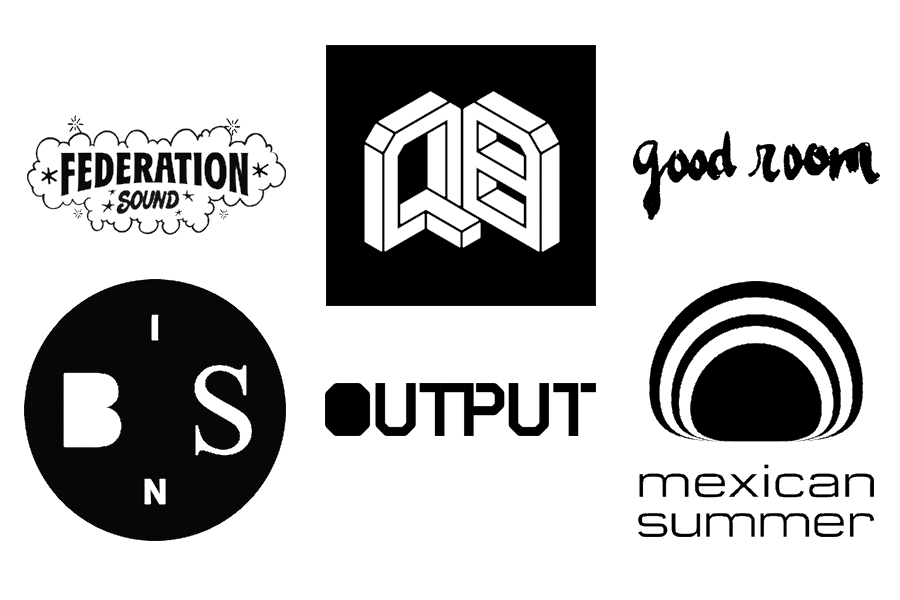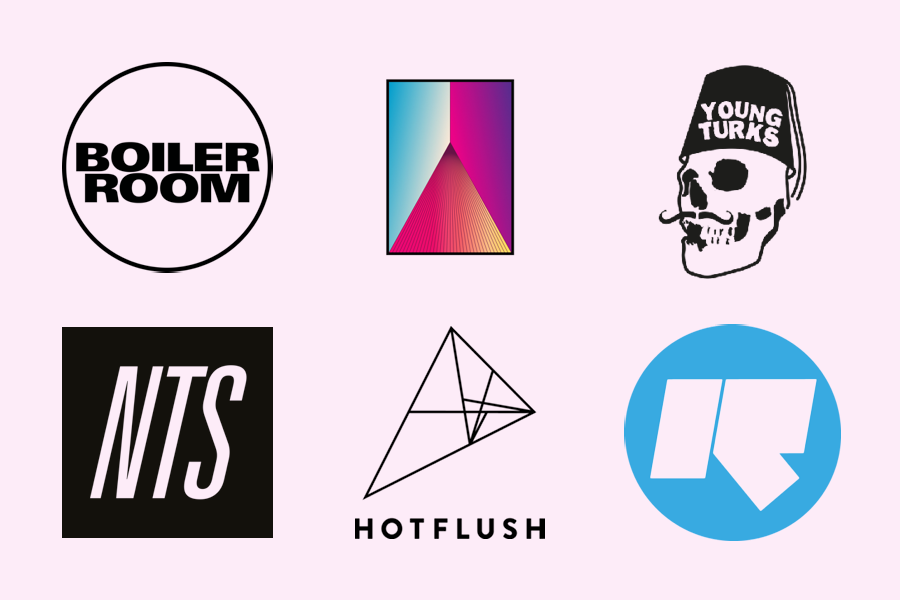Paris Music Logos Explained
18 Parisian collectives share the stories and inspirations behind their visual identities
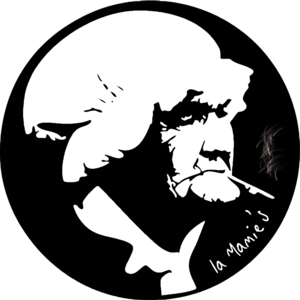
La Mamie’s
By the dawn of the 2010s, the exorbitant prices and less-than-friendly atmosphere of inner-Parisian clubs prompted party collectives to look beyond the city limits for new alternatives. La Mamie’s (French for “granny”) was born after a group of friends took over an abandoned property in the suburb of Montrouge for weekly informal evenings, publicized via word of mouth between a restricted circle of friends. As time went on, their audience grew, and it was time for the collective to get more official, giving way to La Mamie’s, after the imaginary former inhabitant of their original haunt.
The group’s pioneering spirit is also expressed in their DJs’ wide-reaching selections, which encompass funk, disco and house music, in their eclectic guest lineups, and in their unending search for unusual venues – leading notably to a 2012 trial run at Nanterre’s La Ferme du Bonheur, an experimental cultural center that became their summer home.
Their unbridled parties, featuring heavy hitters such as Zernell, Antal, FunkinEven, Hunee and Geo-Logy, helped them garner a reputation exceeding the underground party circuit. The collective now finds itself on the marquees of clubs on the national and international stage. The hyperactive collective also collaborates on the Macki festival alongside Cracki Records, another suburban warehouse party trailblazer, making them one of the French capital’s busiest crews.
La Mamie’s logo, which was designed by close friend Chloé Lang, has been the same since 2008. “We like its mysterious yet homey vibe,” explains Fantin. “It allows us to play with the collective’s name, to invent clever ways of naming and describing our parties, and to come up with ideas like providing our guests with granny clothes to wear out on the dancefloor. There’s also this dichotomy in that La Mamie’s is our name, but then we also had a bunch of noise complaints from elderly people in the neighborhood.” They keep their logo so close to their hearts that it’s even slated to appear on their forthcoming label’s buttons.
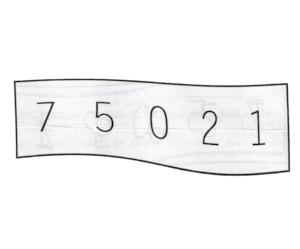
75021
Local outfit Sonotown and Soukmachines dreamed up 75021 – a reference to what the mythical 21st borough of Paris’ postal code would be – back in 2012, and over the last four years, the collective held court in 6B, a former warehouse in the suburb of Saint-Denis, throwing shapeshifting parties (day/night, in/out) with the mandate of pushing back the city’s restrictive boundaries and claiming the outer ring as a limitless playground. And while 75021’s original leitmotiv was to promote local DJs, it has opened its playbills to other scenes, such as Lyon, Bordeaux and even Brussels. Each event makes way for creativity and the unexpected, with indoor and outdoor scenes such as informal concerts and food pop-ups. Co-founder Marc Resplandy lists the project’s next steps as “continuing to ramble through greater Paris, throwing multi-day parties, and launching our own label.”
With a name devised as a rallying cry to the area’s creative forces, what better way to illustrate 75021 than with a flag? “75021’s logo is a simplified flag for this imaginary territory,” expounds the group’s graphic designer, Florent Hadjinazarian. “The hardest part was coming up with a symbol that would speak to the 75021 community, and that’s why we chose to use the numbers.” This simplicity ensures a harmonious continuity between the productions: “graphically, our logo is well suited to our flyers: raw, textured and warped, as if it was just found on the ground, scanned and re-used.”
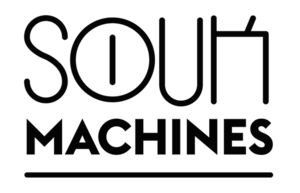
Soukmachines
Soukmachines started as an event planning outfit 11 years ago, and puts on temporary multi-media events and installations in abandoned venues (such as a former toothpaste factory in Nanterre), developing their skills as mediators between city halls, landlords and neighborhood associations. Soukmachines’ mandate is to develop a sphere in which innovative artists from across the capital will be drawn, with activities as varied as artists’ residence, creative space appropriation, open houses and both daytime and nighttime parties, insisting on the full cooperation of every stakeholder to bring ephemeral spaces to life.
The group’s logo was redesigned a year and a half ago to better reflect the new directions dreamed up by its organizers. Graphic designer François Hédin made a logo that “sought to have a cleaner, more minimal feel than the previous one; a solid, impactful and legible wordmark.” It was imperative for the multidisciplinary group to express the diversity of its activities: “our graphic designer at the time, who has been working on our visuals since 2013, opted for the clashing of two distinct fonts – a skinny, playful handwritten one propped up on stilts, and a static, robust one, like an unstoppable machine,” explains François. “That’s what Souk is about – a collective an agile, busybody collective based on solid foundations.”
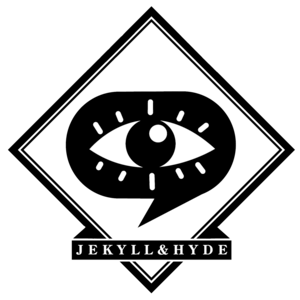
Jekyll & Hyde
Founded by Kermit Dee and Jim Strata in 2008, at the dawn of Parisian nightlife’s supposed rebirth, Jekyll & Hyde has been oscillating between graphic design and music without so much picking a side: as the principals are quick to point out, J&H is “a state of mind, a vision of life and of our generation.” The multidisciplinary collective connects local illustrators, DJs, dancers and visual artists (such as Tom Joyce, Keumel or even R.X.) to some of the city’s nightlife institutions, such as the legendary venue Rex Club and upstart electronic music festival Weather.
Nowadays, J&H is extending its tentacles: its illustration- and tattoo-related Tatooine project is making babies throughout the world (Budapest, Belgrade, Berlin, Beijing), while club night Philia maintains its residence on the Rex’s programming. Its third project, J&H Visions, brings visual arts to the masses through the creation of silkscreens, clothing and visual production.
For this busybody multi-media collective with roots in hip-hop and electronic music, Jim Strata created a logo that harkens back to graffiti, focusing on the elements of the eye and speech bubble, as framed by the diamond shape, which “represents Bunker 105, our studio space of many years.” The eye within the speech bubble is of particular significance: “I used the Jekyll & Hyde universe as a starting point, this omniscient eye that pops up throughout the narrative. It’s also a recurring symbol in many religions and secret societies, hence the speech aspect.” The comic-book mainstay also refers to Jekyll & Hyde’s origins as a webzine.
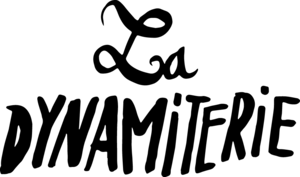
La Dynamiterie
La Dynamiterie, a revolving door of new talents since its 2014 founding, combines its members’ skills in musical programming, communications, production and mediation to organize, promote and facilitate encounters between art and culture. With a focus on the new arts El Dorado that are the Eastern Suburbs of Paris, the collective puts on daytime, outdoor events that provide temporary expression spaces for musicians, dancers, set designers, photographers, visual artists, painters and just about any other type of creatives.
After an unsuccessful attempt at a festival (to be held in a former explosives plant, hence the name), the group decided to focus on throwing ambitious parties in unusual spaces such as former markets and underground quarries with unrestricted audacity, and plans to extend its reach with a vinyl and digital record label.
The group’s first logo, designed by Valentin Ammann, “represented a white-on-black hexagon-shaped explosion,” explains Arthur Binois, the project’s current illustrator. Originally created for an event, the typeface now serves as La Dynamiterie’s logo: “it used to be integrated in the exhaust coming out of a smokestack,” continues Arthur, who does all of the collective’s illustrations by hand, in order to curate a DIY-to-the-bone image that is “coherent and recognizable.”

Pardonnez-nous
With members hailing from all over the country, the Pardonnez-nous collective roamed throughout France before electing Paris as the base for its laid-back, libertarian parties. The collective’s festive, cutting edge and accessible sound is what give their events that sometimes electrified, always hedonistic vibe. Instead of blowing their budgets on big names, the five founding members share their turntables with guest DJs such as Quarante&Un, Amila, Eugenio, Lakuti and Heartbeat’s Melik: “we all come from collectives where we got used to working with big bookings, and we wanted to try something more intimate,” explains Victor Mantel, co-founder and artistic director.
To pique the public’s curiosity, Pardonnez-nous keeps the lineup a secret, changing venues each time, revealing only as much as the enigmatic title of the events and a few keywords on the Facebook event pages will lead on. According to Victor, “we run these things according to our own rules,” so much so that in 2016, the collective even broadcast a 24-hour set live from the apartment, showing off a who’s-who of French nightlife.
Pardonnez-nous chose not to have a logo per se, but rather represents itself “via the use of Fraktur, a type of gothic calligraphy font that we use for most of the text,” Victor explains. The graphic identity revolves around this typeface, with decaying applied to titles for simplicity and impact, combined with a photo that evokes the theme at hand and the occasional sprinkling of color, with the only rules the prominent use of “Pardonnez-nous,” and the addition of a touch of humor.
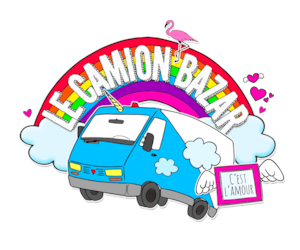
Le Camion Bazar
Since 2013, unexpected crowds have been reported to form between stages at many festivals: winding your way through the throngs of dancers, you will come up to a Renault Master van helmed by DJs Bene Detta and Romain Play, who have been roving around France and Europe behind the wheel of their Camion Bazar.
Originally meant to serve as a pop-up shop-cum-sound system presenting impromptu games and performances, the team eventually focused on what the audiences were really demanding: music. So now, as Bene Detta takes care of the dada performances and happenings, such as fitness classes and sequin explosions, Romain Play keeps the sound system burning with his impulsive, unbridled mixes, clocking in miles and accumulating sleep debt at venues such as Weather, Coco Beach, and countries as far as Poland.
Their graphic designer friends, Léa and Emilien, came up with a logo that represents this familial view of partying, a photoshopped illustration that presents a childlike ideal of the vehicle: “The truck, the rainbow, the pink flamingoes, hearts, love, color, happiness and togetherness – that’s all we stand for,” the couple concludes.
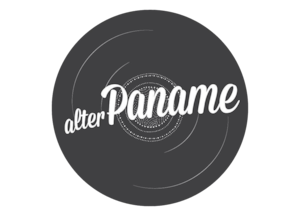
Alter Paname
The idea behind Nina, Marie, Laurent and Nicolas’ Alter-Paname collective was at first pretty much the same as that of countless other promoters: to throw parties they themselves would want to attend. Unlike other promoters, however the group turns the fantastical all the way to 11, with far-out concepts that turn into true happenings including, but not limited to, bringing a Ferris wheel to the already very circus-y venue Cabaret Sauvage.
For the last three years, they have been bringing their zany, anarchic party ambiance all over the capital, scrambling up their guest lineups, the only diktat being the full participation of the audience. A single party can shift from a set by the Discomatin crew to Zadig’s abrasive techno, or have Sven Von Thüllen’s intellectual techno selection topping off Mike Huckaby’s Detroit-inflected grooves. Their strategy paid off: the collective is now called upon by bigger businesses in need of event planning expertise.
The group’s first designer, Yann Rachon, gave life to Nina Fashahi’s idea for Alter-Paname’s logo, a simple vinyl record with the collective’s name on it. The collective decided to eschew the ideas of a graphic charter or visual branding, keeping their visuals fresh from one party to the other, calling on different designers to provide artwork to fit each event’s theme.
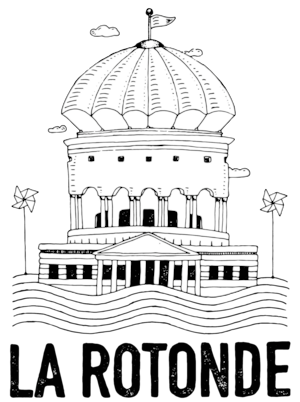
La Rotonde
The magnificent pavilion of La Rotonde used to serve as a gate in Paris’ 18th city walls, where tolls were levied on incoming merchandise. It has since become a bar and restaurant, adjoining a more recent nightclub with weekly programming by director Renaud Barillet (who also helms cultural center La Bellevilloise.) Since 2014, its ground floor is also home to the Mini Club, which director Anne Derennes turned into a clubhouse for some of Paris’ finest upstarts, such as Play Like The Cops Are Waiting Outside, Les Yeux Orange and Exploration Music, resulting in parties that are at once raucous and intimate.
Lately, La Rotonde has taken to closing the restaurant side on certain nights, giving promoters such as Phonographe Corp and Bon Esprit free reign over the space’s three dancefloors. Some dates are even put aside every year for outdoor parties on the immense terrace, turning the historical landmark into an artistic meeting point for artists, audiences and activists.
The outfit’s graphic designers, Marie Lemaistre and Sébastien Laading, made a labor of love of expressing the building’s spirit and history in the form of a logo that repurposes “its imposing, massive form, focusing on the lighter aspects of architect Claude Nicolas Ledoux’s vision, thereby echoing La Rotonde’s new philosophy.” The idea was to present a “strong, lively and human” identity reflecting the surrounding neighborhood.
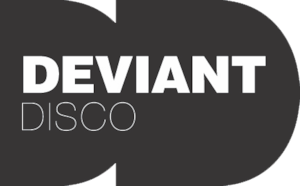
Deviant Disco
Deviant Disco would not have existed if it hadn’t been for the Internet: Éva Peel created her Facebook group in 2012 to define a new genre that is “something like disco, but isn’t really disco.” The collective’s manifesto is a platform for dusting off gems that have been responsible for some of the best (and tackiest) moments in ’80s pop music.
A true renaissance woman, Éva hops from her sporadic gigs as a freelance writer, to officiating as half of musical duo Theremynt, to throwing parties with her band of hyperactive co-promoters, among which: David Chouferbad, a digger and writer for indie webzine Hartzine; Fred Serendip, an inveterate record collector who is as infamous for his compilations on French label Born Bad Records as for his flea market stall; Ygal Ohayon, formerly Gilb’R on Versatile Records, a sort of covert agent on the Parisian scene. After flirting online for a year, the collective finally consummated their passion for warped dance grooves on the roof of Nuba, one of the capital’s most gorgeous terraces, and has since treaded major ground with appearances at bars and clubs such as la Rotonde, le Cannibale Café and les Petites Gouttes. More recently, Deviant Disco has been featured at Lyon’s Nuits Sonores festival, and have taken part in the Grands Voisins urban renewal project, alongside Solar Sound System.
Far from indulging in nostalgia, Deviant Disco also champions live acts whose style is consistent with the shapeshifting genre. Regarding its graphic identity, Éva Peel insisted on a “modern logo that draws from the past without excluding the future.” For Maxime Aprile, who handles a large proportion of the group’s visuals, the idea was to display an allegiance to disco while allowing for its adaptation according to different themes: “the logo was created in close collaboration with Éva,” he explains. “We expressed the idea of disco with the 70s-inspired rounded shapes, and we had to play with the dual ‘Ds’ in the name. It still had to be impactful, legible, and a little bit retro – but not too much.”
Flyers are essentially under the purview of Maxime and Hillel, who also occasionally mans the turntables. The collective can also count on Yoshi Hitchcock, who is in charge of video teasers as well as VJing for a number of the group’s events, in keeping with its slightly off and zany sense of humor. The gang is working on putting out their label’s second EP, and has its sights set on going global.
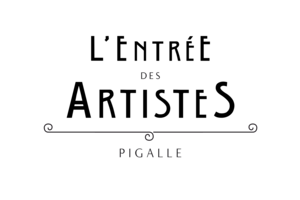
L’Entrée des Artistes
As J.A.W., Julien, Édouard and Thomas have spent the last decade organizing club nights showcasing rare groove, soul, jazz, funk and house music, as well as live jazz, picking up a coterie of loyal guest artists and DJs like Sadar Bahar, Dego, Floating Points, Red Greg and Zaf along the way, They have since taken the project from Paris venues such Djoon to its new residency in Prince Charles, a former pool in Berlin’s Kreuzberg district, but closer to home, Édouard (last name Vermynck) welcomes music lovers to his restaurant on Pigalle’s rue Victor Massé, with a weekly night, Bottle, serving as the group’s Parisian residency.
Guest DJs are invited to play “what they want, just like at home,” explains Édouard. The former hostess bar, refurbished in a cozy wrought iron, wood paneling and marble ambiance, has become a haven for rare groove aficionados. Looking around, we see that the simple, homey atmosphere is imbued with the owner’s attention to detail and eye for the essential – qualities that are reflected in the venue’s graphic identity: “I drew the restaurant’s logo myself. I wanted something that translated the place’s values: a welcoming, no-frills place that concentrates on delivering a quality product.” And while L’Entrée des Artistes has only been in operation for a year and a half, all signs point to the same longevity enjoyed so far by J.A.W.
.36c53307.png?auto=format&w=300)
Controverse
To talk to Controverse’s Antoine Fontaine (AKA NTN) is to be met with a torrent of optimism and passion. Only a year ago, his collective, whose other members go by the names Hummu$ DJ (real name Adam), Hadj Sameer (Samir) and Kebra Comoc (David) was throwing parties in the basement of Parisian neighborhood brasseries, after blazing out of the gates just one year before along the banks of the Seine, with their first event, the Douzette festival, to which they had invited a number of hosts from London radio station NTS.
Later, they moved on to the Jazz Y Jazz, a neighborhood café known for its couscous and raï nights, now known as the Charizari. The promoters fell in love with the offbeat venue, which also allows them total freedom: “We threw a couple of bi-monthly nights where we invited pals like The Pilotwings, Basses Terres, Nathan Melja or Mad Rey to play under other aliases,” recalls Antoine. This spontaneity made the parties the talk of the town, in spite of their underground ethos.
While other collectives would put their visual identity lower on the priority ladder, forward-thinking Controverse made it into an almost elemental concern: “Our logo came pretty much before the first party, as an homage to 1980s logos, like the ones for Metroplex or French label Celluloid, who had the great idea of bringing the ‘O’s from their names to the forefront, in order to make them interact with the labels on their 12"s. The ‘O’ with the arrow running inside it is a representation of occult symbol Ouroboros, aka the snake eating its own tail. It’s a symbol for cyclical reinvention, and was one of Carl Jung’s favorite motifs. We use it to justify the vintage aspect of our selections.”
The first flyers for Jazz y Jazz, as well as some elements of the Festival Douzette’s visual identity, were created by David Chastel, who is both a member of the collective and a director at Galerie Frank Elbaz. Arthur Naulot of Basses Terres took over the Charizari event’s visuals, instating a two-color graphic charter lifted from the aesthetics of late ’70s fanzines. And while it appears that Charizari’s events will be discontinued in the coming year, Antoine is determined to help his collective find new ways of bringing its message to the faithful.
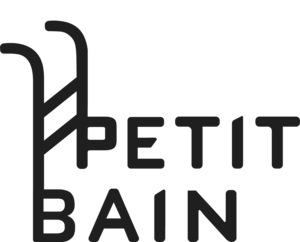
Le Petit Bain
Le Petit Bain draws from a rare 20-year history and remains true to founding organization Guinguette Pirate’s original aim: to take over floating spaces for the purpose of live music and other multidisciplinary art happenings. Moored on the François Mauriac quay just opposite the Bibliothèque François Mitterrand National Library, le Petit Bain opened its doors in July 2011. Not content with adapting itself to an existing vessel, le Petit Bain had its floating home custom-made – which explains the sheer size of the room, and its impeccable acoustics.
Operating as a collective, le Petit Bain maintains its social inclusion mandate: “the goal is not to generate profit at all costs, but to find a balance that allows us to continue operating as independently as possible,” explains Nicolas Cuinier, one of the programming directors. “So with only 10% government subsidies, we are able to maintain a budget that allows us to keep improving our venue and develop our staff in and outside of work.”
The outfit was also able to bring together a variety of audiences, and establish a solid presence in its neighborhood – and Paris at large – without much media coverage. Its programming vacuums up everything on its path, bringing to light the Most Wanted microhouse nights as well as the noisier, EBM-oriented KongFuzi, among a number of other club nights promoted by a constellation of smaller collectives. The live programming is just as eclectic, having presented punk icon Jello Biafra, Parisian rapper Hayce Lemsi and Brazilian group Novalima. But le Petit Bain is more than a concert hall: la Cantine, its restaurant, further cements the space’s openness to the city, providing nourishment for the body as well as the soul by showcasing performances throughout, in keeping with the Bain’s social initiatives.
This holistic view is represented by the venue’s logo, which is the brainchild of Lola Duval, who had laid out a number of the Guinguette Pirate’s visuals: “the ladder recalls a swimming pool, but also the idea of stepping on stage, or even that of progressing in one’s career,” Nicolas explains. Other visuals are now under the authority of Studioburo, who have handled graphic design projects for such institutions as cultural TV network Arte, Jeff Mills and the Techno Parade.

OTTO10
The 15 members of OTTO10 all met through partying, either at Benicassim, Burning Man, Nachtdigital or even the first We Love Art. Before throwing their first party, the longtime friends engaged in a six month reflection that finally led to the founding of their collective, which, in keeping with the subversion that was to permeate all of their activities, was named after painter Otto Dix.
“At first, we thought of coming up with a binary-inspired OIIOIO logo, recalling the computer-based aspect of electronic music,” they explain. “We finally settled on something less abstract that retains a certain minimalism in the style of Ahn Sang-Soo, bringing the repetition of ‘O’s to the forefront.” The collective doesn’t hesitate to pervert its own name, mutating it in through wordplay to make it fit the theme of a particular evening (“ottochtones,” “zigottos” for weirdos).
Michaël Scheu is in charge of most of OTTO10’s visuals, hijacking Dadaesque paintings in a way that the collective describes as “remixing” a work of art, like a producer putting his own signature on a track. Lately, the group made its events even more whimsical by setting up a role-playing game ahead of the evening: “we ask the audience to choose an imaginary tribe to belong to when they buy their ticket. Each group as its own identity and symbol, so that guests can find their tribe easily. For example, the Cul Cul Clan group had a flag with ridiculous candy-pink drawings on it,” explains Fabien.
With Germany’s Fusion Festival and Nevada’s Burning Man as avowed influences, the collective proclaims an ardent desire to take its audience under its wing, promoting a kind of communal living. Far from buying into the tired old principles of house nation or the original raves, the group preaches that pleasure begets pleasure. When asked what makes for a successful evening, they all agree that “first and foremost, it’s an evening where you met new people, either friends of friends or perfect strangers. An evening where you remember laughing a lot, talking about the world’s future, or about the music that’s playing. After parties are cool, but what’s really important is that things remain convivial and light. And when that all happens in the same night, you know you’ve done everything right!”

Tropical Discoteq
Inspired by François K, Danny Krivit and Joaquin’ Joe Claussell’s Body & SOUL parties, Emile Omar began his DJing career in 1990, and in the early 2000s started putting on his own night at bar-restaurant Djoon, helping Greg Gauthier bring “Dance Culture,” his tea-dance complement to his legendary “Cheers” disco and deep house party to the same space. Starting in 2006, Emile’s Domino residence became the scene of his seven-hour mixing marathons, encompassing a plethora of soulful selections from the ’60s on, gradually integrating his newfound passions for afro-funk and afro-disco, leading three years later to the first Tropical Discoteq, an afro-themed night he put together alongside Hugo Mendez, founder of Sofrito Records, at la Favela Chic. Now in charge of programming at Radio Nova, Emile brings his taste for the eclectic to a national audience, making the station a standout in France’s broadcasting landscape.
Emile decided to give his night’s visuals a contrasting feel to the soukous, Haitian kompa, Congolese rumba, Angolan, Cape Verdean and South American grooves now resonating within the walls of the Bois de Vincennes’ Pavillon du Lac: “I wanted to use a font that had nothing to do with the cliché,” he writes. The idea is to trump any preconceived notions about tropical and Caribbean genres and the vintage imagery surrounding vinyl records, with a simple, DIY-inflected design that has piqued the curiosity of a growing number of converts over 100 editions.
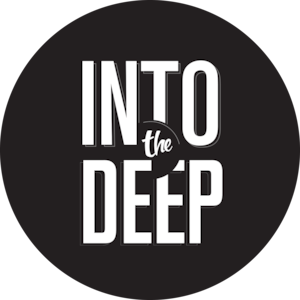
Into The Deep
Frenchmen Stephane Dauchez (AKA Step Lee) and Arthur Lastmann met in Berlin in 2011 during an internship at legendary label !K7. Upon returning home after months spent raiding the German capital’s record stores and nocturnal institutions, they vaulted from theory to practice and set up Into The Deep, providing Paris with a taste of Berlin with their polymorphous sets and guest lineups that merge disco and house with more minimalist leanings. Having successively invited the likes of DJ Masda, Nick Holder and London vocalist Andrew Ashong to play their nights since 2012, the duo branched out with their label Confluence, which releases terse, sonically dense deep house cuts by artists such as José Rico and Darand Land.
The label’s covers are designed by Aurélien Farina, and Into The Deep’s logo was created by a childhood friend, who also designed some of their first flyers using Grégoire Lesourd’s photography. When the duo set up a residency at Djoon, the Left Bank club’s in-house designer, Pwe, took over the posters. The logo, with a blocky Into The Deep cut out of a solid-colored circle, remains the collective’s signature across all of their projects, its simplicity and versatility reflecting the principals’ eclectic tastes.
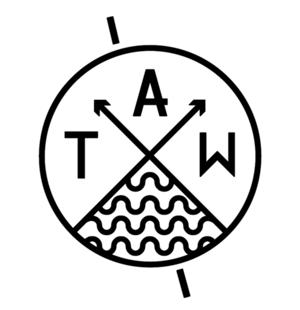
Around The World
Around The World came about as a very lucky accident: when John Delisle (Jo Deli), a graphic designer by training, first heard one of elementary school teacher Robin’s mixes, he realized there was somebody out there who shared his musical vision. With a disregard for the constraints of genre and a passion for finding tracks coming from all over the world (like their hero Gilles Peterson), the two friends started mixing music tropical rhythms along with soul, funk and boogie from all over the globe.
Two years ago, the duo started putting on events at Nautes, a venue on the right bank of the Seine, inviting local scene pioneers – like Hugo Mendez, Aurélio Lostgrooves, Waxist and even Radio Nova’s Émile Omar – to share the turntables with them. They were recently joined by Robin’s cousin Thomas, a sort of Lyon-based satellite, and Bahia, who lends a hand whenever he can.
According to Jo Deli, the collective’s logo was conceived around a circular shape, “because the Earth absolutely had to be part of it. The line that crosses the circle represents the planet’s 23.5-degree inclination, recalling the world music aspect of what we do, while the intersecting arrows in the middle represent the mixing of the genres.” As for the visual identity, “I want to translate the music that we like in an impactful, legible way. That’s why I often use warm, sunny colors and use references to modes of transportation or landscapes to express the idea of travel.”

Station MU
In 2002, members of the Fresnoy contemporary art school educational committee decided to put their interest in urban matters into practice by instituting sound art itineraries. The idea grew into multimedia projects encompassing video, performance and outdoor installation art scattered throughout Paris and situated in various interdisciplinary festivals. Flash forward ten years, and Collectif MU had elected a 150-seat 18th-arrondissement concert/party venue, Garage Mu as its headquarters, moving on since then to Station Mu, a former train station near Porte d'Aubervilliers.
The new space plays host to the collective’s multiple passions, including live music and other performing arts, as well as contemporary and multimedia arts: “we want to court the widest possible audience, by presenting quality programming that is equally accessible and challenging, at reasonable prices,” says music director Éric Daviron.
While the letters MU at first stood for music, they have since become more of an acronym for “urban metaphor,” drawing from the legend of the lost continent of Atlantis, the fabled submerged link between Hawaii and Easter Island, in order to hint at the links that sometimes exist between disparate elements. The collective’s logo was conceived by Anna Lemoine and Vincent Voillat, who originally came up with several dozen variations. The final logo was chosen for its simplicity and its intimation of soundwaves, with concentric semi-circles that recall the broadcasting of sound through space, a motif also reflected in the train station’s architecture. As the venue is now host to a great number of other collectives, the main challenge of the graphic charter, as entrusted to the Klar agency, is to harmoniously integrate the torrent of images provided by other event organizers across the multitude of projects.
